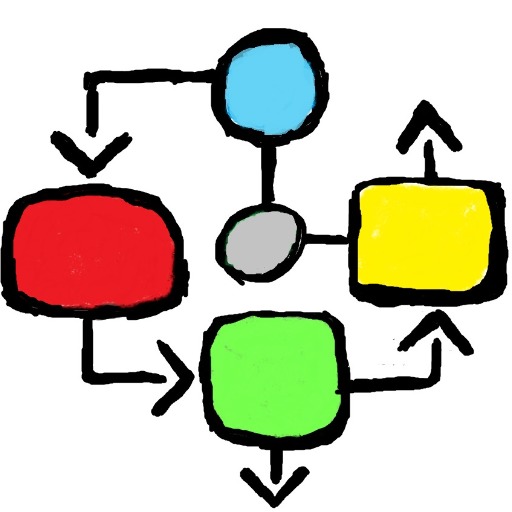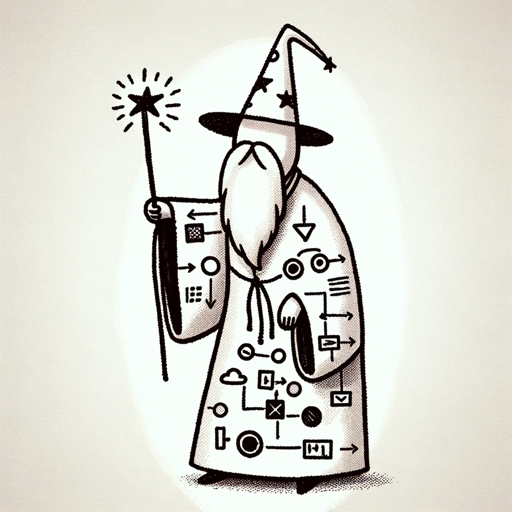Venn Diagram-Venn Diagram creation tool
Visualize relationships with AI-powered Venn Diagrams
Compare two topics
Compare apples to oranges
Compare iPhone to Android
Leave feedback at gptgalore.io
Related Tools
Load More
Diagrams & Data: Research, Analyze, Visualize
Complex Visualizations (Diagram & Charts), Data Analysis & Reseach. For Coders: Visualize Databases, UserFlows, ERD, PlantUML and More. For business & data analysis: Mindmaps, Flowcharts and more.

Data Visualizer 👉 Graphs 👉 Charts
Creates data visualizations, graphs, and charts.

Diagrams & Charts
Transform complex information into clear visualizations. Create and export diagram charts for a simple and precise data presentation. Ideal for analytics and reporting.

Eraser Diagrams
Generate a diagram from a description or code snippet

Flow Diagram Producer
Specializes in precise flow diagrams.

PlantUML Diagram Wizard
A diagram wizard to the rescue
20.0 / 5 (200 votes)
Introduction to Venn Diagram
A Venn diagram is a visual tool used to represent the relationships between different sets. It consists of overlapping circles, each representing a set, with the overlaps showing the common elements between them. Venn diagrams are commonly used in mathematics, logic, statistics, computer science, and business to illustrate the similarities, differences, and relationships between different groups of items. For example, in a business setting, a Venn diagram can help visualize the overlap between customer segments, such as those who prefer online shopping versus in-store shopping, and those who are price-sensitive versus brand-loyal.

Main Functions of Venn Diagram
Comparison of Different Sets
Example
Comparing product features
Scenario
A tech company can use a Venn diagram to compare the features of their products with competitors. This helps identify unique selling points and areas for improvement.
Logical Relationships and Probabilities
Example
Understanding probabilities in statistics
Scenario
In statistics, Venn diagrams can help visualize probabilities. For instance, they can illustrate the probability of events A and B occurring together or independently, aiding in the understanding of complex probability problems.
Data Organization and Analysis
Example
Organizing survey results
Scenario
Researchers can use Venn diagrams to categorize survey responses, highlighting commonalities and differences between respondent groups. This helps in analyzing data patterns and drawing meaningful conclusions.
Ideal Users of Venn Diagram Services
Educators and Students
Educators can use Venn diagrams to teach complex concepts in a visual and interactive manner. Students benefit from this as it helps in better understanding and retention of information through visualization.
Business Analysts and Strategists
Business professionals can use Venn diagrams to analyze market segments, compare business strategies, and identify areas of overlap and differentiation. This helps in strategic planning and decision-making.

Guidelines for Using Venn Diagram
Step 1
Visit aichatonline.org for a free trial without login, also no need for ChatGPT Plus.
Step 2
Identify the topics or sets you want to compare. Clearly define the criteria for each set.
Step 3
Create circles for each set, ensuring they overlap to show commonalities. Label each circle with the set name.
Step 4
List unique characteristics in the non-overlapping sections of each circle. List shared characteristics in the overlapping sections.
Step 5
Review and analyze the Venn diagram to understand the relationships and intersections between the sets. Use this analysis for decision-making or reporting.
Try other advanced and practical GPTs
Free Bypass AI Detection: Human Ink
Humanize AI content effortlessly with AI.

PDF or Image to LaTeX Converter
AI-powered tool for converting mathematical formulas to LaTeX.

URL Website Crawler
AI-Powered Data Scraping Made Easy

Assistente de Declaração do Imposto de Renda 2024
AI-powered accuracy for your tax declaration.

CPC Expert - EWADV - ⭐🧑💼💼
AI-Powered Legal Insight Tool
AIdvokat - Umelý Právnik (Slovenské právo)
AI-powered Slovak legal insights

Prompt like an Art Director 6.1
AI-powered prompt crafting tool.

Marketing Cloud Mastermind
AI-powered Salesforce Marketing Insights

Visio Diagram Explorer
AI-powered Visio diagram explorer.

Python 神经网络助手
AI-powered Python neural network optimization

Idiomatic Tutor
AI-Powered Idiomatic Expression Refinement.

T-Mobile
AI-powered customer service for T-Mobile.

- Academic Writing
- Data Analysis
- Problem Solving
- Market Research
- Project Planning
Detailed Q&A about Venn Diagram
What is a Venn Diagram used for?
A Venn Diagram is used to illustrate the logical relationships between different sets, showing similarities and differences among them. It's commonly used in various fields such as mathematics, logic, statistics, computer science, and business analysis.
How can Venn Diagrams help in decision-making?
Venn Diagrams help in decision-making by visually presenting the commonalities and differences between multiple options or criteria. This aids in understanding overlapping benefits or drawbacks, leading to more informed choices.
Can Venn Diagrams be used for qualitative data?
Yes, Venn Diagrams can effectively represent qualitative data. They are useful in comparing and contrasting attributes, features, or characteristics that are not easily quantifiable.
What are some common mistakes to avoid when creating a Venn Diagram?
Common mistakes include using too many sets, which can make the diagram complex and hard to read, not clearly defining the sets, and failing to label the sections accurately, which can lead to misinterpretation.
How can I make my Venn Diagram more effective?
To make your Venn Diagram more effective, use clear and concise labels, ensure proportional representation of set sizes if applicable, and choose contrasting colors for better visual distinction. Also, avoid clutter by limiting the number of sets and focusing on the most relevant information.